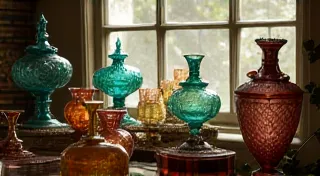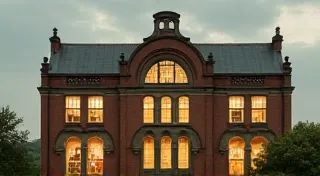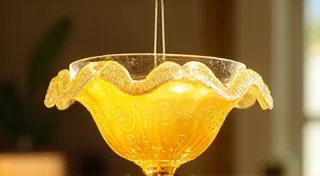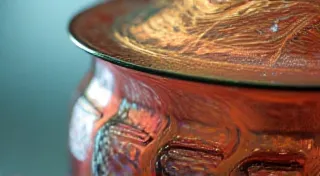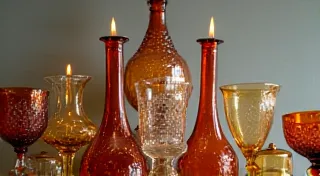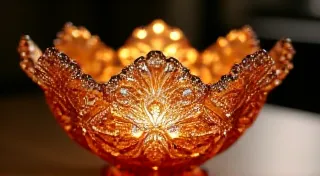The Rise and Fall of Carnival Glass Production: A Historical Perspective
Carnival glass, with its mesmerizing iridescent sheen, holds a unique place in the world of collectible glass. Its vibrant colors and playful designs captured the imagination of the public in the early 1900s, but its production wasn't a constant. This article explores the timeline of carnival glass, charting its rise to popularity, its eventual decline, and the factors that shaped its history. Understanding this history is crucial for anyone involved in glass collecting and appreciating the artistry of antique glass. Beyond the simple sparkle, there's a fascinating story of manufacturing processes and evolving tastes that influenced carnival glass's brief but brilliant reign.
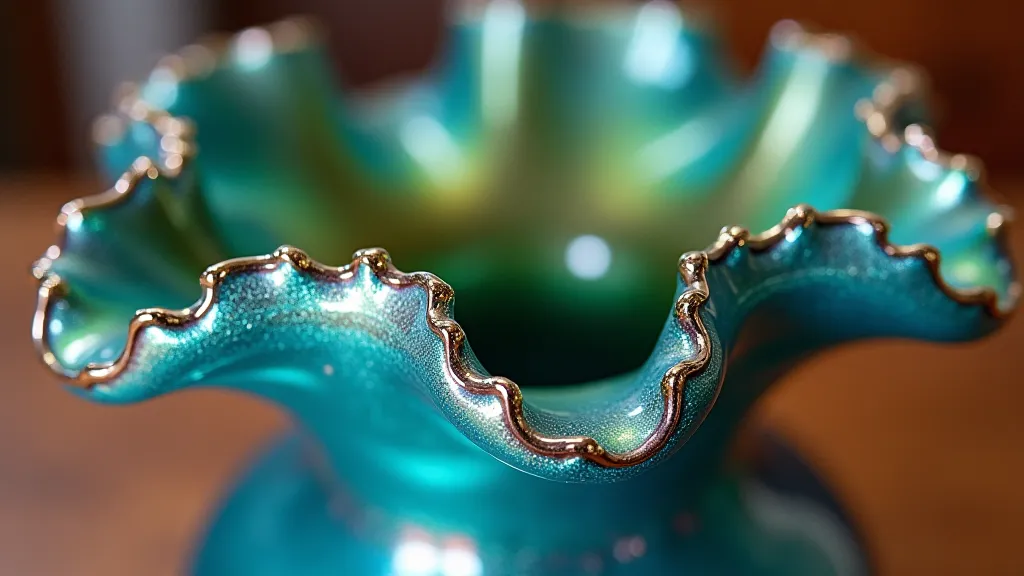
The Golden Age: 1905 - 1925
The commonly accepted timeframe for the peak production of carnival glass runs from approximately 1905 to 1925. The exact origins are a little murky, with some experts suggesting earlier experimentation, but 1905 generally marks the beginning of large-scale production. Several American glass manufacturers, including Fenton, Northwood, Imperial, and Milcrest, were instrumental in producing these dazzling pieces. The name “carnival glass” itself is thought to stem from its prevalence as prizes at carnivals and fairs – affordable luxuries that delighted attendees.
These manufacturers employed a process of layering colored glass powders onto a sheet of clear glass before firing. The specific combination of colors determined the iridescence – often referred to as “fire finish.” Popular colors of the era included peacock (blue/green/purple), marigold (orange/gold), amethyst, and custard. Achieving that perfect fire finish wasn't a simple feat; the skill of the glassmakers and the precision of the process were essential to producing truly exceptional pieces. The intricacies of these processes are what many collectors delve into, wanting to know beyond the simple sparkle and understand the craftsmanship behind each piece.
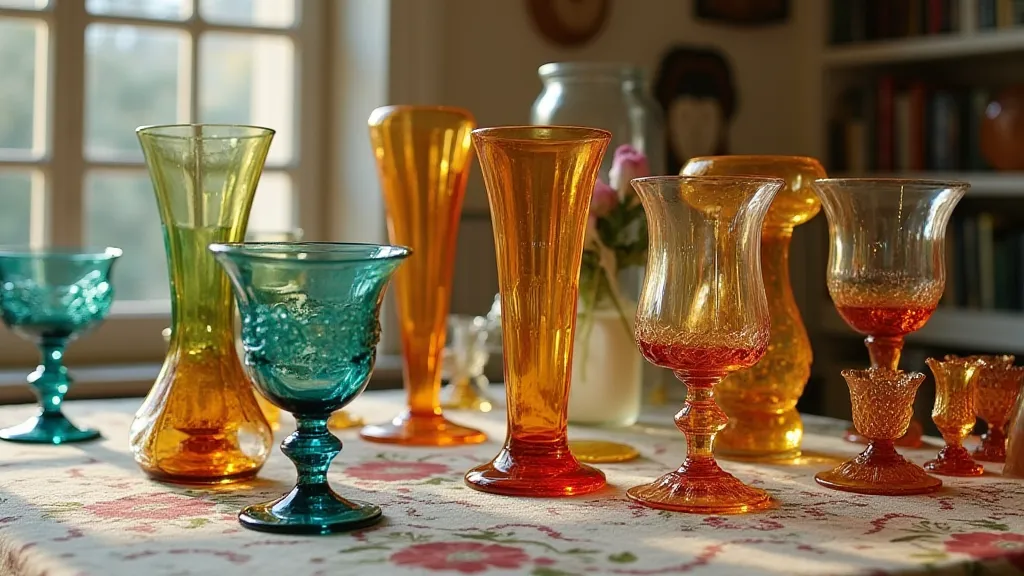
Factors Contributing to Popularity
Several factors fueled the immense popularity of carnival glass during its heyday:
The allure wasn't just in the price or the look; it was also tied to a specific cultural moment – a time of burgeoning leisure activities and a growing desire for accessible luxuries. The association with carnivals and fairs helped create a perception of fun and affordability, contributing significantly to its widespread appeal. The rise in popularity was also intricately linked to the industrialization that made large-scale glass production possible.
The Decline: 1925 - 1935
The boom didn't last forever. By the mid-1920s, production began to slow down. Several factors contributed to this decline:
The shift in tastes was perhaps the most significant factor. The exuberance and flowing lines of carnival glass began to feel out of sync with the emerging Art Deco aesthetic. The desire for sleek, geometric forms became increasingly prominent, and carnival glass, with its organic shapes and vibrant colors, simply didn’t fit the bill. This wasn't solely a matter of changing aesthetic preferences; it also reflected broader societal shifts and evolving design philosophies. Furthermore, the complexities in recreating the "fire finish" added an extra layer of difficulty, as factories struggled to consistently produce the coveted iridescent quality. Some speculate that the methods used were not entirely understood, leading to inconsistencies that impacted quality and drove up costs.
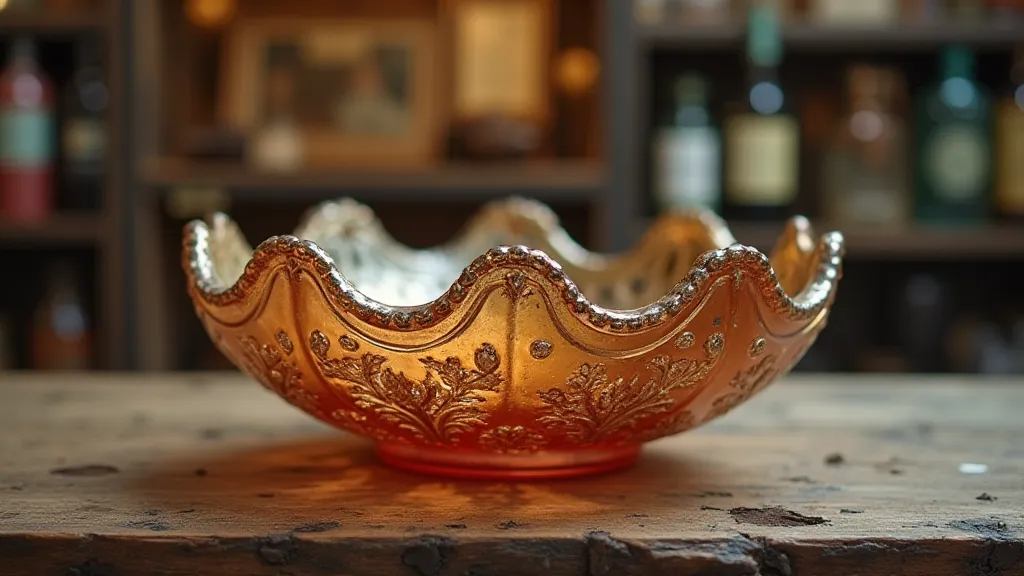
A Brief Revival and Final End
There was a minor revival of carnival glass production in the late 1930s and early 3040s, largely fueled by the Depression era's desire for affordable beauty. However, this resurgence was short-lived. World War II and its aftermath effectively ended carnival glass production for good. The raw materials and skilled labor needed for its manufacture were redirected to wartime efforts.
The Depression era provided a unique context for this brief revival. During times of economic hardship, people often seek affordable ways to bring beauty and joy into their lives. Carnival glass, with its relatively low cost and stunning appearance, offered a glimmer of hope and a touch of luxury amidst difficult circumstances. However, this resurgence was fragile, and it ultimately proved unsustainable when the demands of war consumed resources and manpower. The relationship between carnival glass and specific historical events is a fascinating area of study for collectors and historians alike.
Legacy and Modern Collecting
Despite its relatively brief production run, carnival glass has left a lasting legacy. Today, it remains a highly sought-after collectible, cherished for its beauty, rarity, and historical significance. Knowledge of its history – the rise, the fall, and the factors that shaped it – enhances the appreciation of these mesmerizing pieces. For those deeply invested in the world of collectible glass, understanding its nuances is crucial, and a fascinating tangent to explore is its connection to the renowned Whitefriers company, a name synonymous with quality and innovation in the glassmaking world.
The market for carnival glass is driven by factors such as rarity, color, pattern, and condition. Prices can vary widely, with some pieces fetching thousands of dollars while others are more accessible to novice collectors. Identifying authentic carnival glass and distinguishing it from reproductions is a key skill for anyone hoping to build a valuable collection. Furthermore, understanding the different marking styles used by manufacturers can provide valuable clues about the age and origin of a piece.
Even seemingly minor variations in color or design can significantly impact value. Experienced collectors often spend years honing their expertise and developing a keen eye for detail. The thrill of discovering a rare or unusual piece is what keeps many passionate about this unique corner of the collectible glass world.
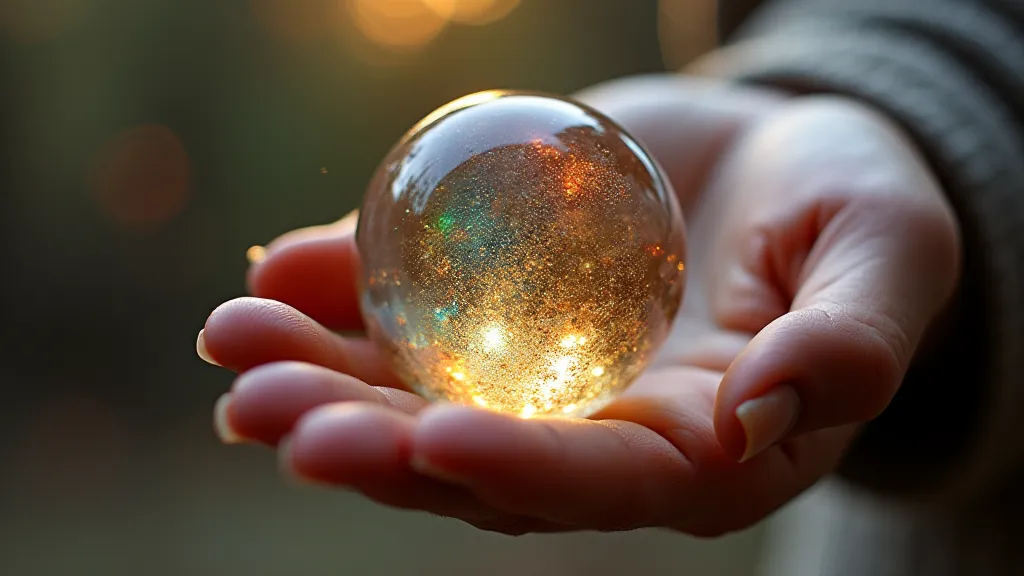
Decoding Value: An Ever-Changing Landscape
Assessing the value of carnival glass is not an exact science. It's a dynamic process influenced by shifting market trends, collector demand, and the overall health of the antique and collectibles market. While a general understanding of factors such as rarity, color, and condition remains crucial, it's also important to stay informed about current auction results and dealer inventories. For those looking to invest in carnival glass, careful research and a discerning eye are essential. Understanding decoding carnival glass prices requires a constant evaluation of these market dynamics.
Furthermore, knowing the unique characteristics associated with different manufacturers is critical. For example, Fenton pieces often display a distinct style and quality that set them apart from those produced by other companies. Recognizing these subtle differences can significantly impact the perceived value of a piece.
Finally, the increasing availability of online resources and auction platforms has democratized the collecting process, allowing enthusiasts from around the world to participate in the market. This has both broadened the collecting community and intensified the competition for rare and desirable pieces.
